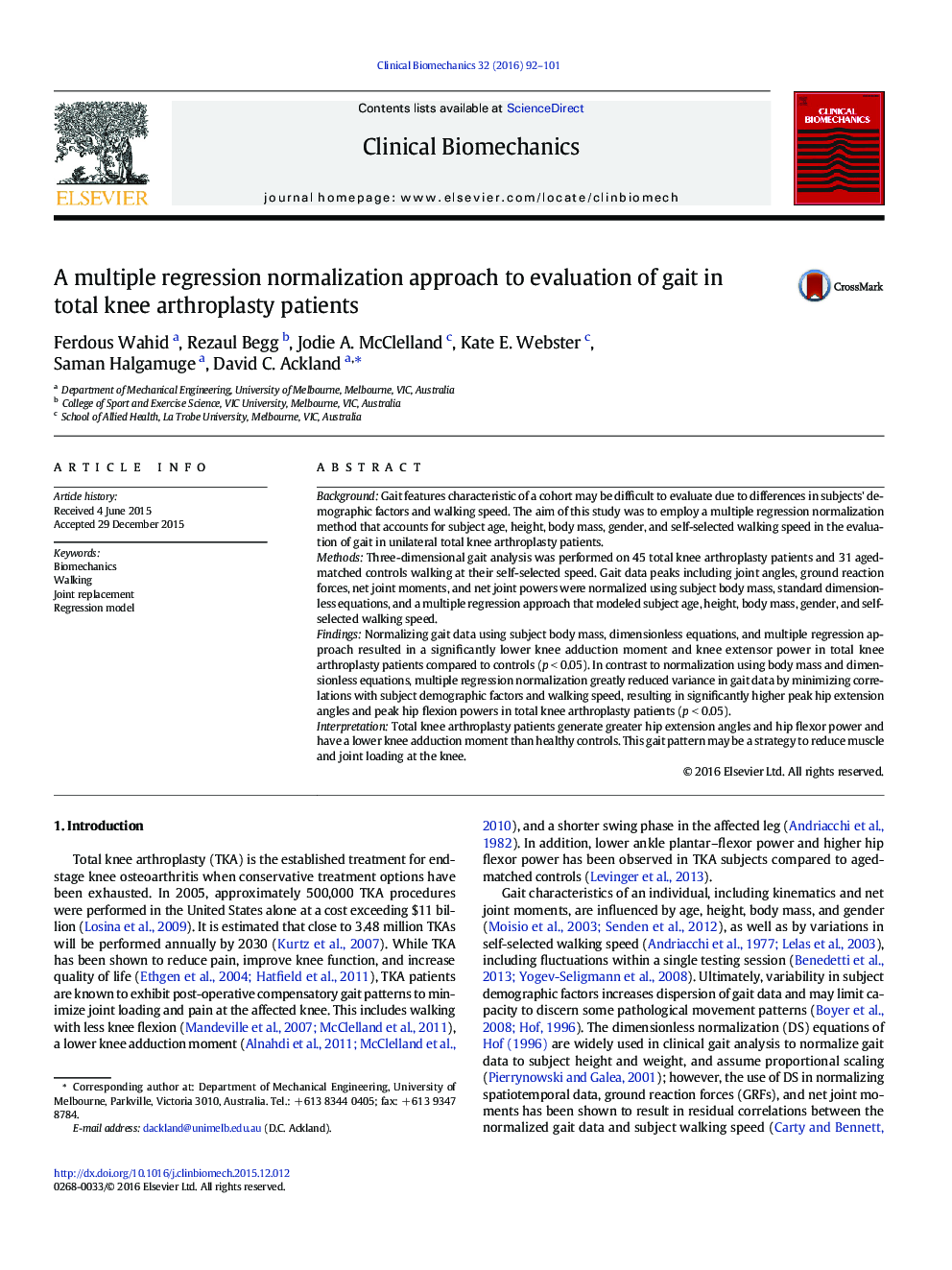| کد مقاله | کد نشریه | سال انتشار | مقاله انگلیسی | نسخه تمام متن |
|---|---|---|---|---|
| 6204606 | 1603746 | 2016 | 10 صفحه PDF | دانلود رایگان |
- Variance in gait data may limit capacity to discern gait patterns in a cohort.
- Multiple-regression normalization decorrelates demographic factors from gait data
- TKA patients have reduced knee function but employ greater hip power
BackgroundGait features characteristic of a cohort may be difficult to evaluate due to differences in subjects' demographic factors and walking speed. The aim of this study was to employ a multiple regression normalization method that accounts for subject age, height, body mass, gender, and self-selected walking speed in the evaluation of gait in unilateral total knee arthroplasty patients.MethodsThree-dimensional gait analysis was performed on 45 total knee arthroplasty patients and 31 aged-matched controls walking at their self-selected speed. Gait data peaks including joint angles, ground reaction forces, net joint moments, and net joint powers were normalized using subject body mass, standard dimensionless equations, and a multiple regression approach that modeled subject age, height, body mass, gender, and self-selected walking speed.FindingsNormalizing gait data using subject body mass, dimensionless equations, and multiple regression approach resulted in a significantly lower knee adduction moment and knee extensor power in total knee arthroplasty patients compared to controls (p < 0.05). In contrast to normalization using body mass and dimensionless equations, multiple regression normalization greatly reduced variance in gait data by minimizing correlations with subject demographic factors and walking speed, resulting in significantly higher peak hip extension angles and peak hip flexion powers in total knee arthroplasty patients (p < 0.05).InterpretationTotal knee arthroplasty patients generate greater hip extension angles and hip flexor power and have a lower knee adduction moment than healthy controls. This gait pattern may be a strategy to reduce muscle and joint loading at the knee.
Journal: Clinical Biomechanics - Volume 32, February 2016, Pages 92-101
